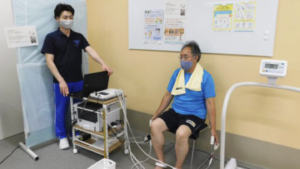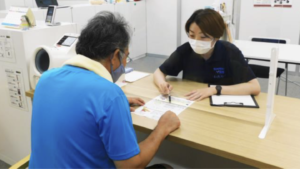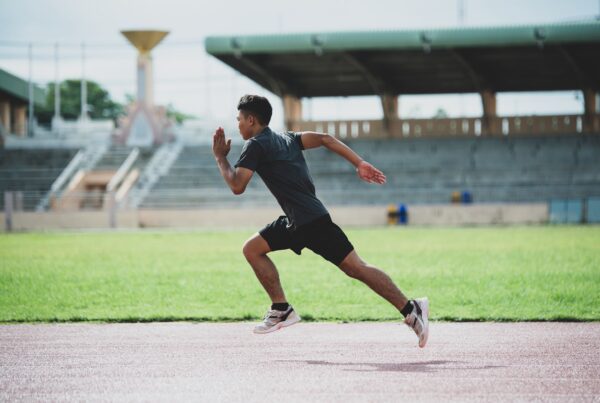The International Day of Persons with Disabilities is celebrated on December 3rd, with one of the goals being to promote support for the well-being of people with disabilities.
A body composition test is an important part of monitoring people with disabilities’ health and well-being. Due to the distinct health issues that many people with disabilities face, such as limb paralysis and restricted mobility. A consistent measurement of body composition changes such as lean mass, body fat, and body water is also critical for their health.

Why body composition of people with disabilities should be monitored consistently?
In comparison to the general population, people with disabilities often have lower levels of health awareness and have more difficulty managing their health.
According to a study, the prevalence of obesity among young people with intellectual disabilities (ID) was nearly twice as high as the general population.
People with ID are more prone to obesity, which can lead to a variety of metabolic, pulmonary, and cardiovascular diseases. This emphasises the significance of regular body composition tests for their health awareness and caregiver attention.
Some stroke survivors experience disabilities often have unhealthy lifestyle which is the main cause of stroke development. Body composition tests that raise their awareness is necessary for their post-stroke lifestyle modifications and ongoing well-being in the future.
Challenges in monitoring body composition for people with disabilities
Raising health awareness among people with mental and developmental disabilities may be challenging if complex explanations are made. Meanwhile, you may find it difficult to effectively communicate with patients using the complex results from sophisticated machines.
Particularly, it can be challenging to predict the total caloric need of people with disabilities because it may not be determined in the same manner as the general population. Understanding body composition readings like Fat-Free Mass is crucial to helping you determine a patient’s daily calorie requirements. This would make it easier to develop more personalized fat loss program that work for people with disabilities.
On the other hand, most body composition measurements using BIA devices are taken in standing posture. You’re likely worried that not all people with disabilities will find it convenient to stand for a few minute measurements. Meanwhile, some people with disabilities may have had limbs amputated, making it more difficult to monitor their body composition. Therefore, it can be challenging to find a body composition analyzer that can be perform accurately with different measurement postures and available for amputees.

Please consult your healthcare professional for the interpretation of result and diagnosis.
How InBody support the people with disabilities in Yokohama City, Japan ?
Yokohoma City’s Rapport Kamiooka provides a “health promotion programme” with the assistance of a qualified medical staff for people with disabilities. They had demonstrated the effectiveness of our body composition analyzer, InBody S10 in their program.
Planning a diet for a disabled person who has conditions like high blood pressure and diabetes is challenging. They discovered that our body composition analyzer offers some helpful readings in calorie intake calculation, which is crucial in ensuring the disabled person consumes the required nutrients. Therefore, they frequently use the reading of body weight and basal metabolic rate, and adjust the amount of diet by keeping an eye on disabled persons’ muscle and fat mass.

With the printed test results, the physician could communicate with patients who have severe intellectual disabilities (ID) more effectively. Meanwhile, the team’s physical instructor has noticed that people with ID primarily move their lower bodies through walks and do not consciously train their upper bodies. This reflects the fact that their upper bodies and trunks typically have less muscle mass in the result sheet. With this discovery, he intentionally adds upper body exercise to each patient’s training.
A delightful results is observed after 3 months of this programs. A total of 110 people with physical, intellectual, and mental disabilities had found with positive body composition changes. Their overall muscle mass was maintained, while the Body Weight, Body Fat Mass, and Percent Body Fat decreased by an average of 1.3kg, 1.4kg, and 1.2% respectively.
In summary, regular body composition tests are crucially important for people with disabilities. The changes in their body composition are strongly related to their well-being and the effectiveness of the care they receive. A quick and accurate body composition measurement of different postures could revolutionise the way health care professionals provide medical check up and give disabled people the chance to learn more about their own health.
As you know, InBody has been striving to develop a body composition analyzer that can be used by everyone—even people with disabilities! There’s a new version of body water analyzer, BWA 2.0 is able to provide the cell’s function evaluation by measuring the cell’s integrity and structure with enhanced body water measurement accuracy. This could provide you the insight of which patients with disability may requires extra medical attention based on their body composition results.
Click here to learn more.
BWA 2.0 Innovative Body Water Analyzer











